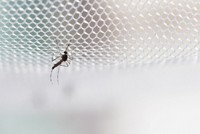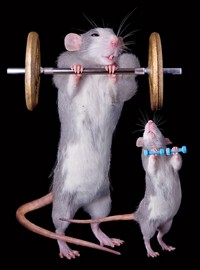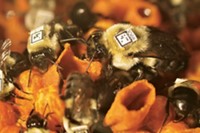Advertisement
Grab your lab coat. Let's get started
Welcome!
Welcome!
Create an account below to get 6 C&EN articles per month, receive newsletters and more - all free.
It seems this is your first time logging in online. Please enter the following information to continue.
As an ACS member you automatically get access to this site. All we need is few more details to create your reading experience.
Not you? Sign in with a different account.
Not you? Sign in with a different account.
ERROR 1
ERROR 1
ERROR 2
ERROR 2
ERROR 2
ERROR 2
ERROR 2
Password and Confirm password must match.
If you have an ACS member number, please enter it here so we can link this account to your membership. (optional)
ERROR 2
ACS values your privacy. By submitting your information, you are gaining access to C&EN and subscribing to our weekly newsletter. We use the information you provide to make your reading experience better, and we will never sell your data to third party members.
Biological Chemistry
Newscripts
Bee-lieve it or not. Nothing fishy here
by Marc S. Reisch
February 17, 2019
| A version of this story appeared in
Volume 97, Issue 7
A bee in math

Birds do it; babies do it; even unsophisticated spiders do it. Now scientists have proved that honeybees, too, can add and subtract.
“Our findings suggest that advanced numerical cognition may be found much more widely in nature among non-human animals than previously suspected,” concludes Adrian Dyer, who led an RMIT University team in a new study on numerical cognition in bees (Sci. Adv. 2019, DOI: 10.1126/sciadv.aav0961).
To prove their point, researchers trained individual honeybees (Apis mellifera) to visit a Y-shaped maze. In a first chamber, the bee viewed an initial set of colored shapes. Blue meant the bee had to add, and yellow meant it had to subtract. Then the bee went on to a second chamber, where it could choose to go through a hole on the left or the right. Shape sets posted above the holes displayed one more or one less shape than in the antechamber.
Motivating the bees to make the right choice was a 10 µL sucrose drop after the second chamber. Failure meant a bitter drop of quinine.
Previous studies also show that velvet monkeys, chimpanzees, orangutans, rhesus monkeys, and one African gray parrot can add and subtract. But can tiny bee brains learn numerical concepts? Count on it: the bees learned to give correct answers 80% of the time.
Another fish story

Other beguiling research into the animal kingdom suggests that at least one type of fish may be self-aware.
The cleaner wrasse (Labroides dimidiatus) is a tropical fish known for cleaning parasites from the skin of larger fish. But scientists at the Max Planck Institute for Ornithology and Osaka City University say the fastidious swimmers recognize themselves in a mirror and attempt to remove marks that don’t belong on their bodies.
A standard test of self-awareness examines an animal’s ability to recognize a reflection in a mirror as its own. Scientists injected a brown marker dye on a number of cleaner wrasse and then placed them in a tank with a mirror.
At first the wrasse appeared to be threatened by their reflected images. But then the fish began to twist and turn and position themselves in an apparent effort to get a better look at the marker dye. The researchers also observed the fish trying to scrape the marks from their bodies.
But even the scientists who did the study think there’s something fishy going on (PLOS Biol. 2019, DOI: 10.1371/journal.pbio.3000021). While acknowledging that the wrasses’ behavior fulfills the criteria of the mirror test, they wonder whether the test truly proves that fish can be as self-aware as humans, chimpanzees, elephants, and dolphins. The Newscripts gang wonders too.
Marc Reisch wrote this week’s column. Please send comments and suggestions to newscripts@acs.org.





Join the conversation
Contact the reporter
Submit a Letter to the Editor for publication
Engage with us on Twitter